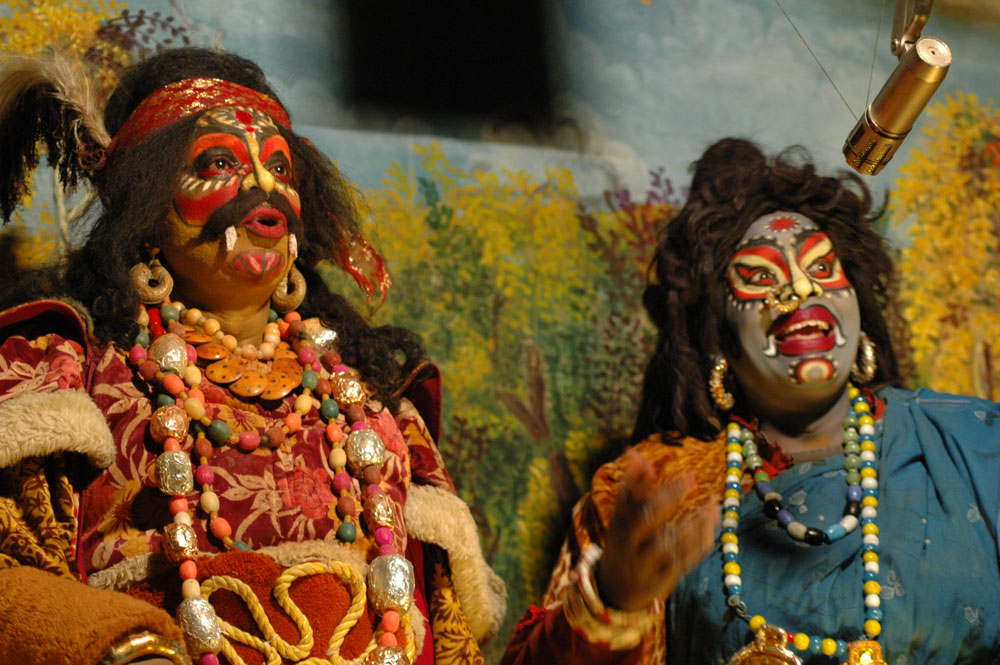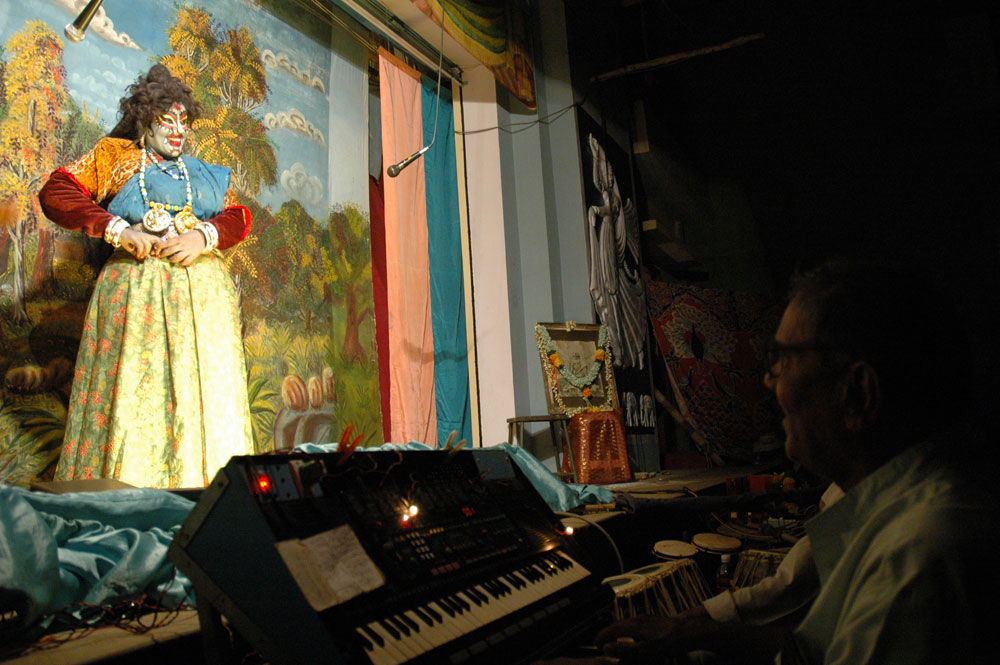KM Madhusudhanan




Grant Period: Over one year
Filmmaker KM Madhusudhanan is a trained painter and printmaker whose interest in contemporary visual culture made him turn to filmmaking. Fascinated with Surabhi, a 120-year-old travelling theatre company from Andhra Pradesh (whose repertoire comprises plays based on the epics and the puranas), he has been following them around from one village to another. While the name of the company and the family of actors has changed over time, it is intriguing that the group has survived for over a century within a primarily rural economy and continues to perform the same plays. The history of Surabhi is no less intriguing. Around 1870, a family of agriculturalists migrated from Maharashtra and settled down in Rayalaseema. Gradually they acquired land and became prosperous farmers. In 1880, one of its members, Vanarasa Sajjiva Rao, gave away his property and with his family began to go around the countryside as puppeteers. The sons continued with puppetry after their father’s demise. One of the sons, Vengoji, adopted a child and named him Govindarao. Govindarao, however, was not interested in puppetry, and he left the family to join a theatre company. Govindarao soon started his own theatre group, and when the Vanarasa family was invited to Cuddapah for a puppetry performance, Govindarao used the opportunity to present the play, Keechakavadam. This performance stunned the village audience and marked the beginning of Surabhi as a travelling theatre company.
Many of Surabhi’s actors worked in early cinema. The most famous among them was Kamalabai, whose mother Gangubai was a Surabhi regular. The proposed one-hour long film, Mayabazar, takes its title from one of Surabhi’s most popular plays. Mr Madhusudhanan envisages the film on three levels that come together as a journey with Surabhi. The first level, which foregrounds the filmmaker’s point of view, will introduce the actors and technicians and examine the processes and techniques that go into the performance of plays. He does not see himself as an outsider because he has been travelling with these families quite often, almost as a member of the company.
Each year, Surabhi performs every night at the five-day temple festival of Nandanmurigaruvu in Bhimavaram. During his travel to Bhimavaram with the group last year, Mr Madhusudhanan decided to use travel as the central motif of the film. Typically, the Surabhi plays are performed in permanent camps in one location for a year or two. Yet, several times through the year, they travel from their permanent camps to surrounding villages for performances. When they travel to a temple festival or community fair, they temporarily relocate their theatre paraphernalia and actors. In the process of documenting this relocation, the film will explore several aspects of the actors’ everyday life and their rehearsals, make-up, costumes, methods of stage construction and various other processes leading up to the performance of a play. The second layer of the film will reconstruct the history of Surabhi. Mr Madhusudhanan will explore the life story of Kamalabai as it unfolds through these memories and experiences. He is also keen to have the actors enact Kamalabai’s story and colour-code these episodes to mark moments from the past in the film.
The third layer will probe the relationships between Surabhi’s plays. Using photographs and archival footage, Mr Madhusudhanan will focus on the spectacular sets, make-up and costumes of Parsi theatre, the visual language of early Indian cinema, primarily the mythological films, and the depiction of gods and goddesses in Ravi Verma’s paintings.
